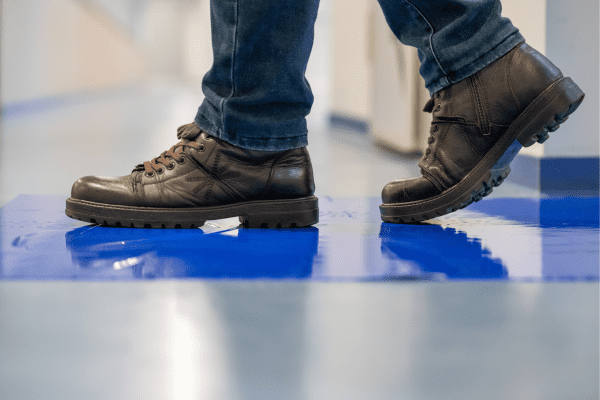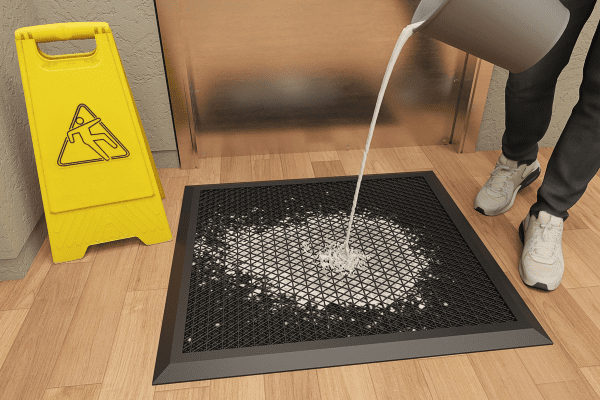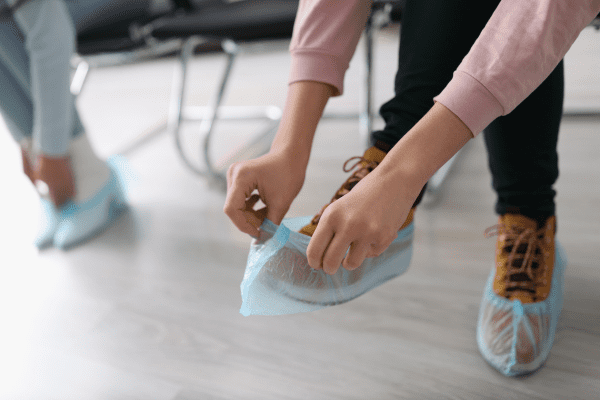Contamination Control: Dycem® Alternatives
When it comes to contamination control, several options are available for managing contaminants from shoes and wheels. However, these alternatives often present risks related to product efficacy, lifespan, cost, user training, downtime, and waste management. Dycem outperforms its competitors in all these areas, offering superior effectiveness and value.
When evaluating options, it’s crucial to consider these factors to ensure you select the most reliable and efficient solution for your needs. Dycem provides a comprehensive approach, minimizing risks and maximizing control.

Dycem® VS Sticky Mats
Scientific testing shows that disposable peel-off sticky mats made of adhesives are only 27% effective at preventing contamination from shoes and wheels. Learn more about this frightening statistic as well as the other risks peel-off mats pose.

Dycem® VS Footbaths & Sanitizing mats
To help stop the spread of pathogens, footbaths, and sanitizing mats are often used in factories that produce food, beverages, or nutritional products. Their use has many detrimental effects.

Dycem® VS shoe covers
Shoe covers are often used as part of gowning procedures in cleanrooms and controlled environments. While effective, they have several risks associated with their use that should not be ignored.
Know the facts...
Currently using an alternative to Dycem?
Download our comparison brochure to understand the risks and benefits of floor-level contamination control solutions.